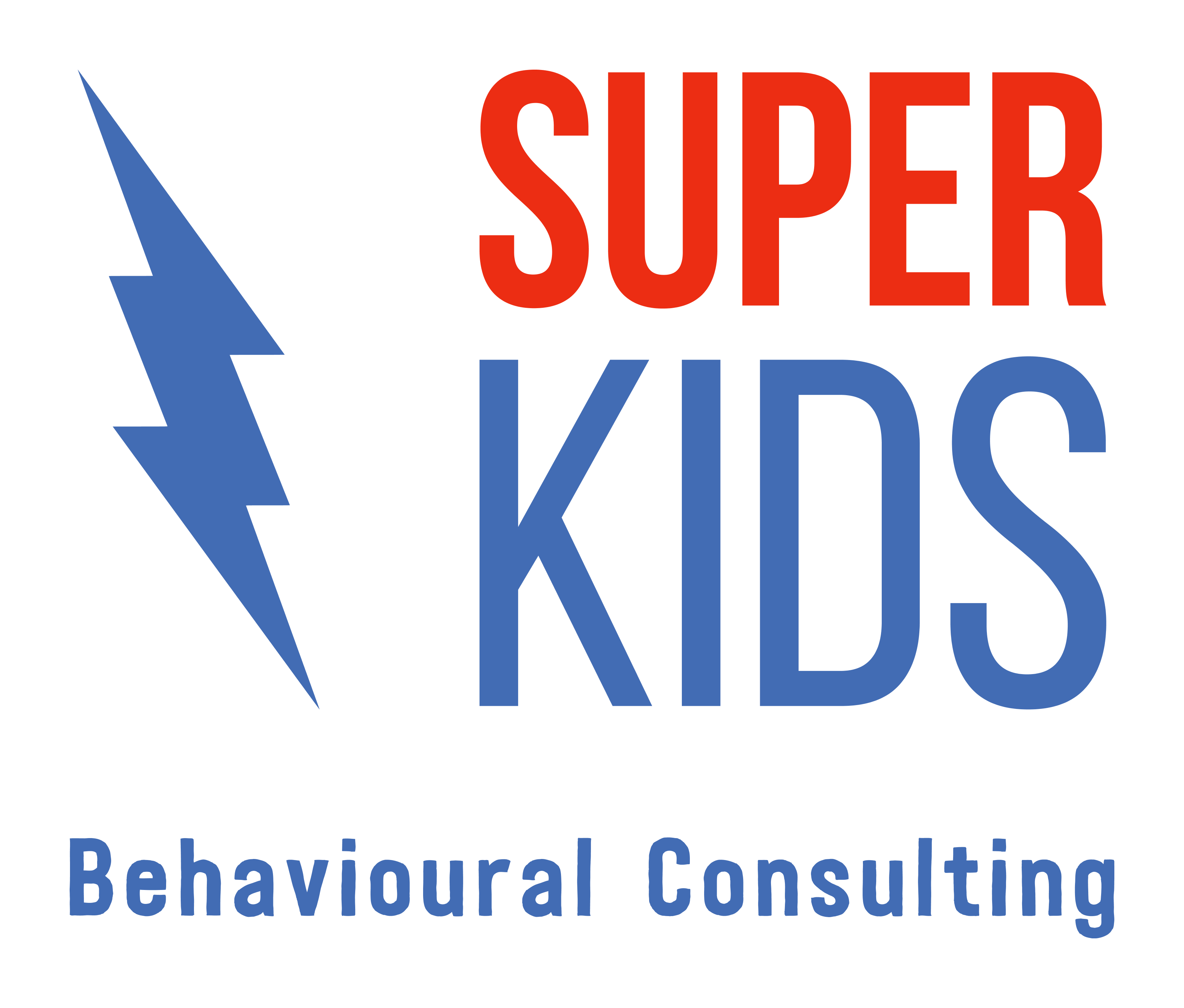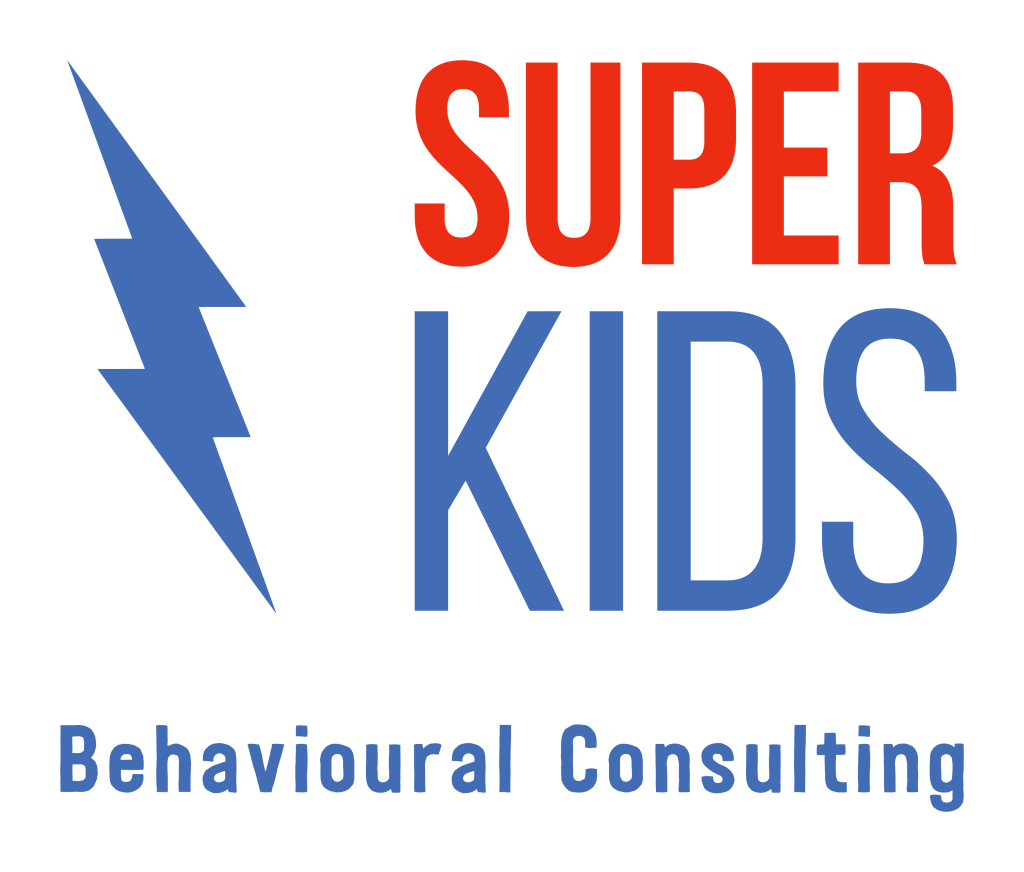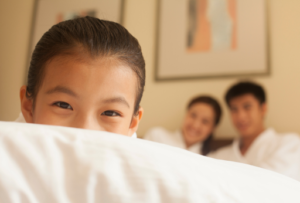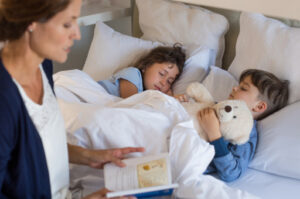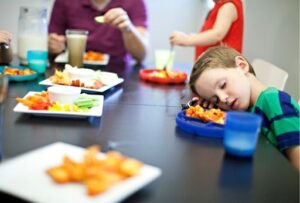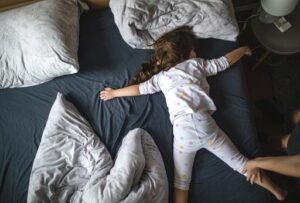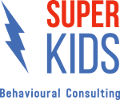“Happy, Relaxed and Asleep”: Teaching sleep skills through joy

Anita Bennett-Stewart
Behavioural Sleep Specialist & Behaviour Consultant
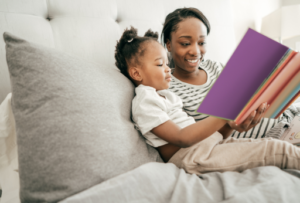
Sleep is essential for us to live healthy lives. Yet, did you know that up to 80 percent of Autistic children experience sleep difficulties, compared to 50 percent of their neurotypical peers?1,2 Do you want your child to be happy, relaxed and asleep at bed time? Behavioural sleep intervention is an effective and evidence-based support for children experiencing behavioural sleep challenges, such as the symptoms of insomnia.3 However, the research on how to best customise an intervention to a child’s likes and dislikes is limited.4
So how can we best learn about a child’s preferences and include these in a behavioural sleep intervention to support better sleep? The idea of ‘happy, relaxed and engaged’ (HRE)5 can help guide us to individualise children’s sleep routines to their preferences and, ultimately, improve quality of life with better sleep.
What is Behavioural Sleep Intervention?
Behavioural sleep interventions have been consistently shown as effective in improving children’s symptoms of insomnia.6,7 A commonly used behavioural intervention is ‘sleep hygiene’ or ‘sleep optimisation’, which is designing daytime and nighttime routines to support healthy sleep.8 This may include:
- Daytime activities – mealtimes, daily movement and exercise, and sunlight
- Bedroom set-up – a quiet, dark and comfortable bedroom environment
- Bedtime routine – a consistent, daily routine which supports a child to transition from their nighttime activities to bed
- Sleep aids – items or persons that a child sleeps with, such as a teddy or a parent
To learn more about Behavioural Sleep Intervention, check out our previous blog here!
What does the research say?
Currently, the research on sleep often recommends individualising a child’s sleep routines to their needs. However, few research articles explain how to do so. In 2020, Phillips and colleagues analysed the current research on behavioural sleep intervention for neurodivergent children and found that the specifications on how to modify behavioural interventions for neurodivergent children were limited.9 Other studies have added Functional Behaviour Assessment to their sleep interventions, and found that the individualisation of behavioural sleep intervention to children’s needs leads to successful outcomes.10,11,12 Further research is needed to identify effective strategies for individualising behavioural sleep intervention to children’s specific needs and preferences.
What is Happy, Relaxed and Engaged?
The concept of HRE refers to a person’s positive affect and engagement with activities.13 When teaching new skills, ensuring a child is enjoying a rich, fun playtime is critical for future teaching to be successful.13
“A meaningful reinforcement context is a useful tool for teaching important skills.”
– Gover, Staubitz & Juarez, 2022, p. 74
Critically, HRE is individualised to the person’s needs and preferences. We must consider which factors will result in the client’s happiness and relaxation and engagement in their preferred activities.
How can we design customised sleep routines?
1. Identify the child’s HRE
The first step is to learn what supports the child to be happy, relaxed and engaged! This could be through observing how the child enjoys spending their free time, asking those closest to the child or asking the child what they like. Some questions to consider include:
- What brings the child joy?
- How do they like to play?
- Who do they like to play with?
- Where do they like to play?
- For how long?
- How can you add extra value to their play to bring extra joy?
2. Create sleep routines which support sleep
Optimise sleep by ensuring that the child’s sleep signals are conducive to sleep. Consider each of the sleep signals, including:
- Bedtime routine: A consistent bedtime routine each night which is short, enjoyable and ends with bidding the child goodnight before sleep
- Bedroom environment: A quiet, dark and comfortable bedroom set-up with minimal disruptions over night
- Sleep aids which support the child to fall asleep quickly at the start of the night and upon waking overnight
3. Customise!
Create a behavioural sleep intervention and sleep routines which are both supportive of a good night’s sleep and which include the child’s individual preferences. This might include, for example:
- If your child enjoys screen time, moving ‘TV time’ to before dinner to ensure they have this preferred activity in their routine and spending quality time with their parents reading a favourite book after dinner
- If your child is distracted from falling asleep by the toys in their room, consider adding a fun routine to “put the toys to bed” outside their room before the child goes to sleep.
- If your child enjoys playing with trains, consider supporting them to choose their own pajamas with trains on them!
By considering both the child’s needs and preferences and general sleep guidelines, this can support the child to have a joyful bedtime each night.
Resources:
- Jin, C. S., Hanley, G. P, & Beaulieu, L. (2013). An individualised and comprehensive approach to treating sleep problems in young children. Journal of Applied Behaviour Analysis, 46(1), 161-180.
- Richdale, A. L., & Schreck, K. A. (2009). Sleep problems in Autism Spectrum Disorders: Prevalence, nature & possible biopsychosocial aetiologies. Sleep Medicine Reviews, 13, 403-411.
- Reynolds, A. M., Spaeth, A. M., Hale, L., Williamson, A. A., LeBourgeois, M. K., Wong, S. D., Hartstein, L. E., Levenson, J. C., Kwon, M., Hart, C. N., Greer, A., Richardson, C. E., Gradisar, M., Clementi, M. A., Simon, S. L., Reuter-Yuill, L. M., Picchietti, D. L., Wild, S., Tarokh, L., Sexton-Radek, K., Malow, B. A., Lenker, K. P., Calhoun, S. L., Johnson, D. A., Lewin, D., & Carskadon, M. A. (2023). Pediatric sleep: current knowledge, gaps, and opportunities for the future, Sleep, 46(7). doi: 10.1093/sleep/zsad060.
- Phillips, N. L., Moore, T., Teng, A., Brokes, N., Palermo, T. M., & Lah, S. (2020). Behavioral interventions for sleep disturbances in children with neurological and neurodevelopmental disorders: A systematic review and meta-analysis of randomised controlled trials, Sleep, 43(9), doi: 10.1093/sleep/zsaa040.
- Hanley, G. (2020, June 4). A perspective on today’s ABA from Dr. Hanley. Practical Functional Assessment. https://practicalfunctionalassessment.com/2021/09/09/a-perspective-on-todays-aba-by-dr-greg-hanley
- Pattison, E., Papadopoulos, N., Fuller-Tyszkiewicz, M., Sciberras, E., Hiscock, H., Williams, K., McGillivray, J., Mihalopoulos, C., Bellows, S. T., Marks, D., Howlin, P., & Rinehart, N. (Accepted/In press). Randomised controlled trial of a behavioural sleep intervention, ‘sleeping sound’, for autistic children: 12-month outcomes and moderators of treatment. Journal of Autism and Developmental Disorders. https://doi.org/10.1007/s10803-022-05809-3.
- Reynolds, A. M., Spaeth, A. M., Hale, L., Williamson, A. A., LeBourgeois, M. K., Wong, S. D., Hartstein, L. E., Levenson, J. C., Kwon, M., Hart, C. N., Greer, A., Richardson, C. E., Gradisar, M., Clementi, M. A., Simon, S. L., Reuter-Yuill, L. M., Picchietti, D. L., Wild, S., Tarokh, L., Sexton-Radek, K., Malow, B. A., Lenker, K. P., Calhoun, S. L., Johnson, D. A., Lewin, D., & Carskadon, M. A. (2023). Pediatric sleep: current knowledge, gaps, and opportunities for the future, Sleep, 46(7). doi: 10.1093/sleep/zsad060.
- Abel, E., Kim, S. Y., Kellerman, A. M., & Brodhead, M. T. (2017). Recommendations for identifying sleep problems and treatment resources for children with Autism Spectrum Disorder. Behaviour Analysis in Practice, 10(3), 261-269.
- Phillips, N. L., Moore, T., Teng, A., Brokes, N., Palermo, T. M., & Lah, S. (2020). Behavioral interventions for sleep disturbances in children with neurological and neurodevelopmental disorders: A systematic review and meta-analysis of randomised controlled trials, Sleep, 43(9), doi: 10.1093/sleep/zsaa040.
- Jin, C. S., Hanley, G. P, & Beaulieu, L. (2013). An individualised and comprehensive approach to treating sleep problems in young children. Journal of Applied Behaviour Analysis, 46(1), 161-180.
- McLay, L. K., France, K. G., Knight, J., Blampied, N. M, & Hastie, B. (2018). The effectiveness of function-based interventions to treat sleep problems, including unwanted co-sleeping, in children with autism. Behavioural Interventions, 34(1), 30-51.
- Woodford, E.C., McLay, L., Blampied, N.M. et al. (2022). Less Restrictive Behavioural Interventions for Sleep Problems in Children with Neurodevelopmental Disorders: A Single Case Feasibility Study. Journal of Developmental and Physical Disabilities. https://doi.org/10.1007/s10882-022-09872-7.
- Metras, R. L., & Jessel, J. (2021). Adaptations of the interview-informed synthesised contingency analysis. Journal of Applied Behaviour Analysis, 54(3), 877-881.
Disclaimer: The advice in this article is general in nature. If your child experiences sleep difficulties, reach out to a trusted professional for further individualised advice and support.
Super Kids acknowledges each individual’s personal preference to use identity-first or person-first language to describe themselves or their loved one. We interchangeably use both language conventions and therefore refer to both Autistic children and children with Autism.
